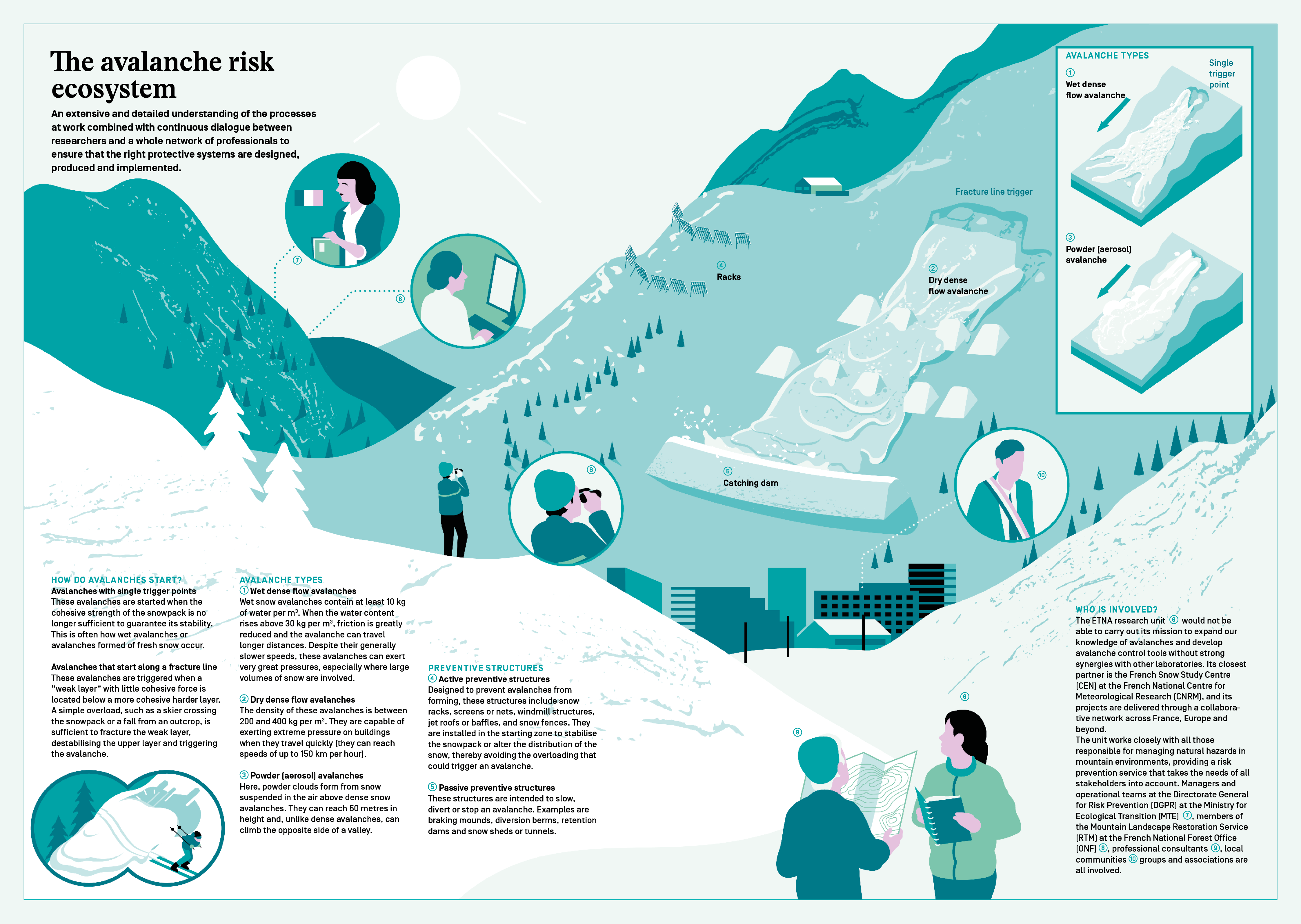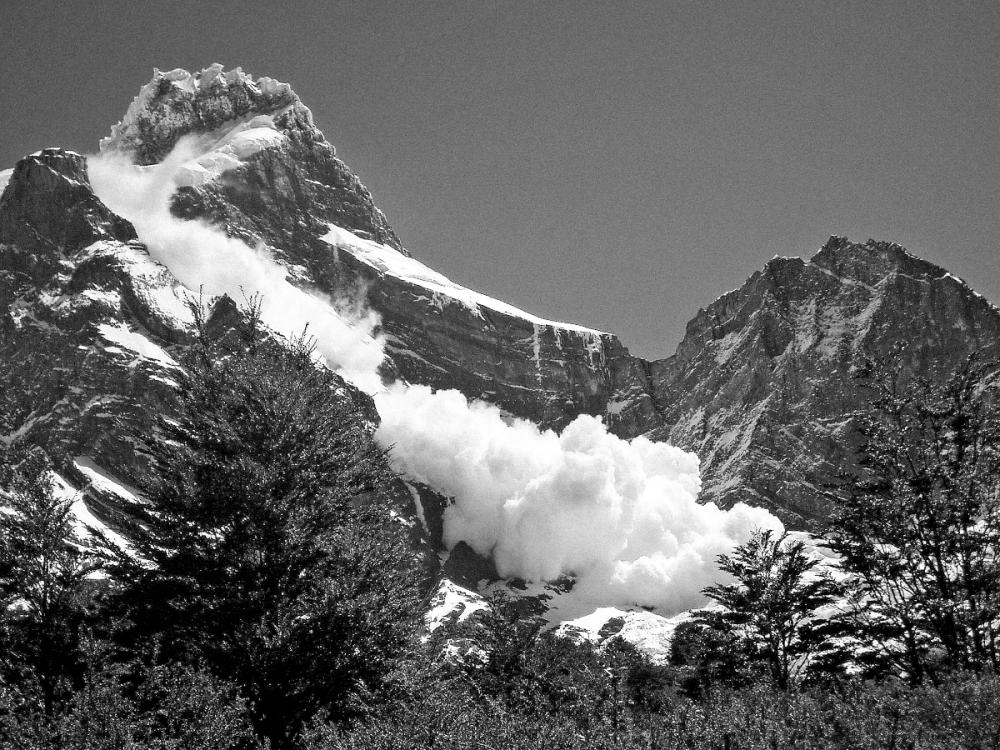Ressources dossier
Climate change and risksUnderstanding avalanche risk
Harsh mountain environments are host to particularly complex interactions between the three dimensions of disaster risk – hazard, vulnerability and exposure. As global temperatures rise, increasingly sophisticated research tools help our researchers to keep pace with the changing patterns of avalanche risk.
Published on 06 February 2023

The magazine that informs, decodes and gives food for thought
This dossier is dedicated to Xavier Ravanat, a member of the ETNA Unit, killed in a mountain accident in February 2021.
[Infographics] The avalanche risk ecosystem

To read in this dossier
Glossary
- Hazard: A dangerous phenomenon that may occur in a given location, characterised by its situation in time and space, intensity, size, frequency and the level of probability associated with its occurrence.
- Vulnerability: The conditions, determined by physical, social, economic and environmental factors or processes, that render individuals, communities, material assets or systems, more susceptible to hazards.
- Exposure: The location of individuals, infrastructure, dwellings, production capacity and other tangible assets in risk zones.
- Mitigation measures: Measures that reduce or restrict the negative consequences of a dangerous event.
- Forcing: The introduction to a model of specific meteorological conditions or events (temperature, precipitation, wind, etc.) that determine the condition and extent of the snowpack and hence local avalanche activity.
(Glossary based on ANR Cahier 10: Risques et catastrophes naturelles, INRAE)
-
Sebastiàn Escalon & ETNA Research Unit
Authors / Translated by Teresa Bridgeman
-
Thierry Caquet, Mohamed Naaïm & Patrick Flammarion
Scientific direction
-
Lou Rihn
Illustrator




